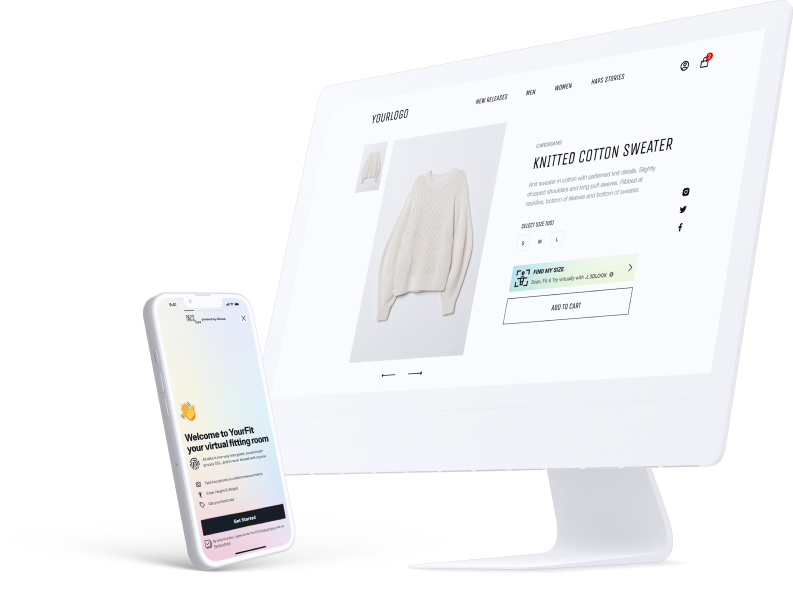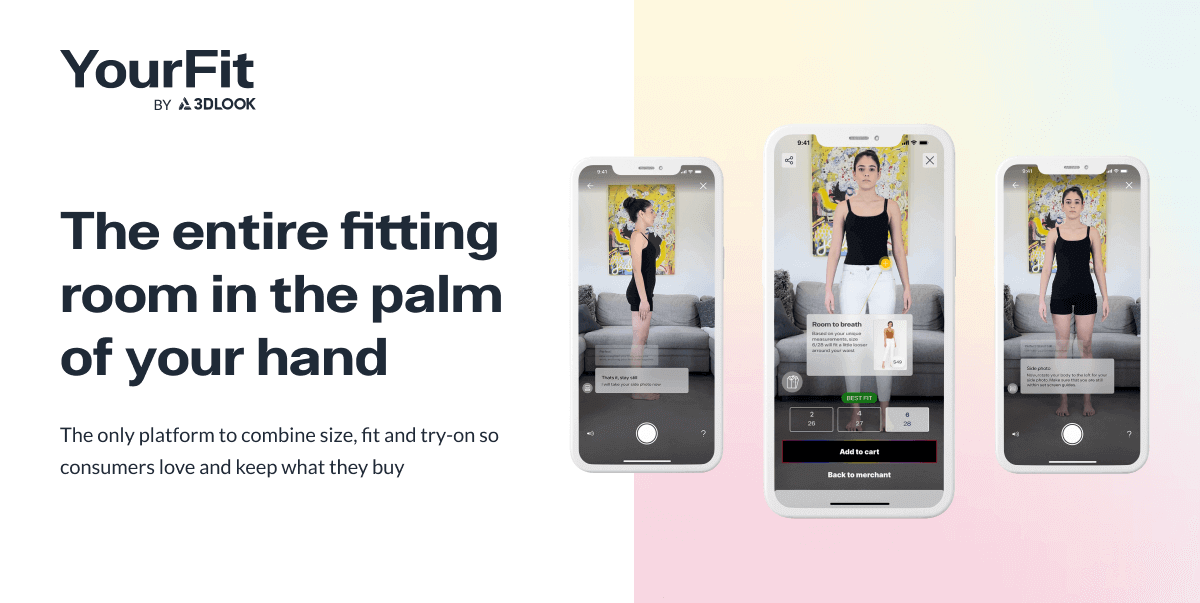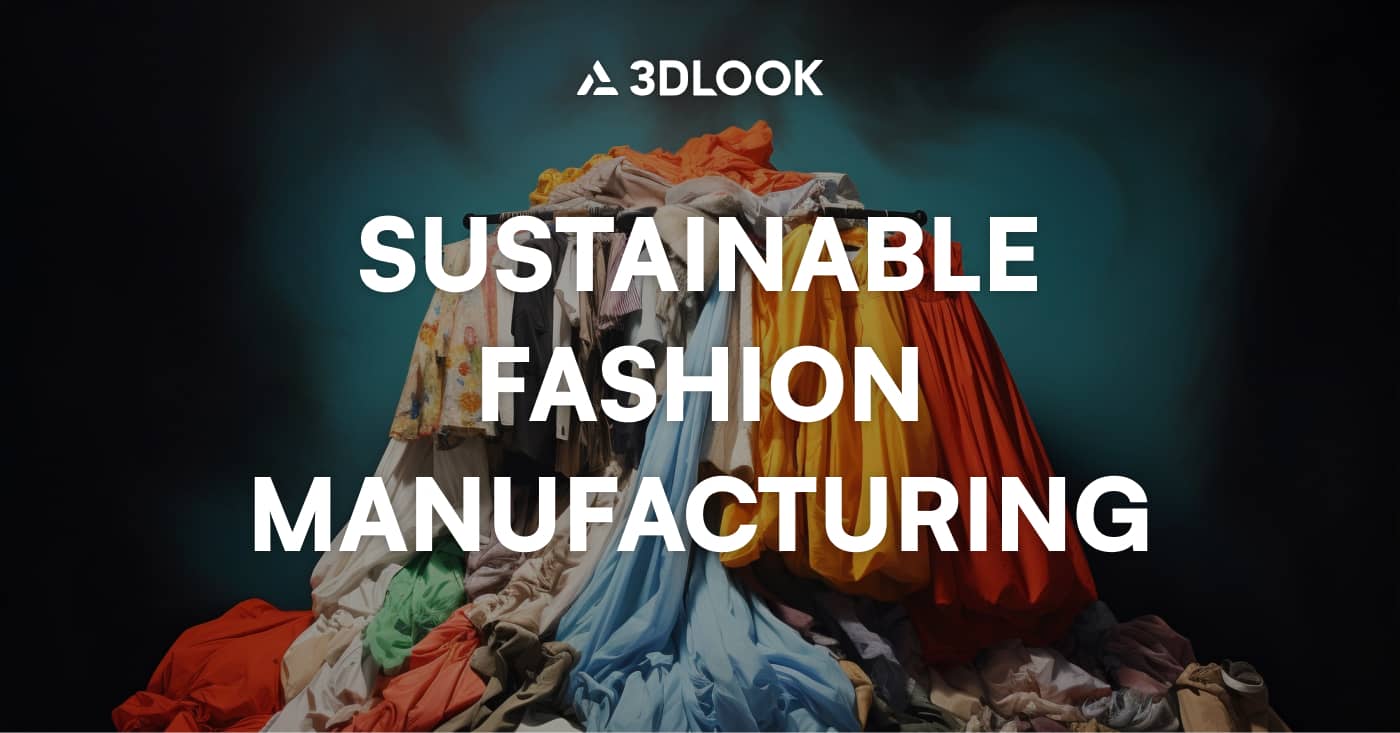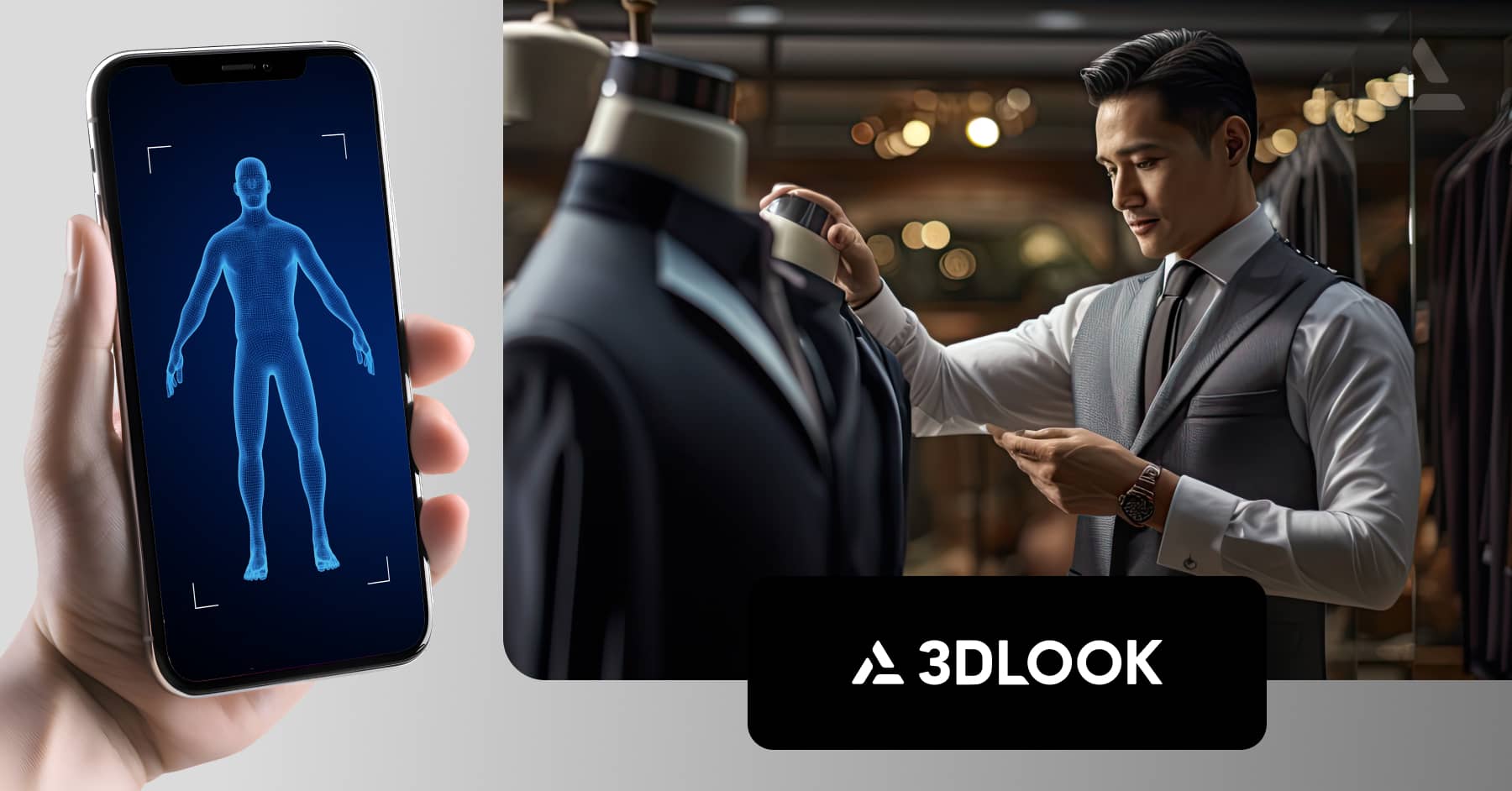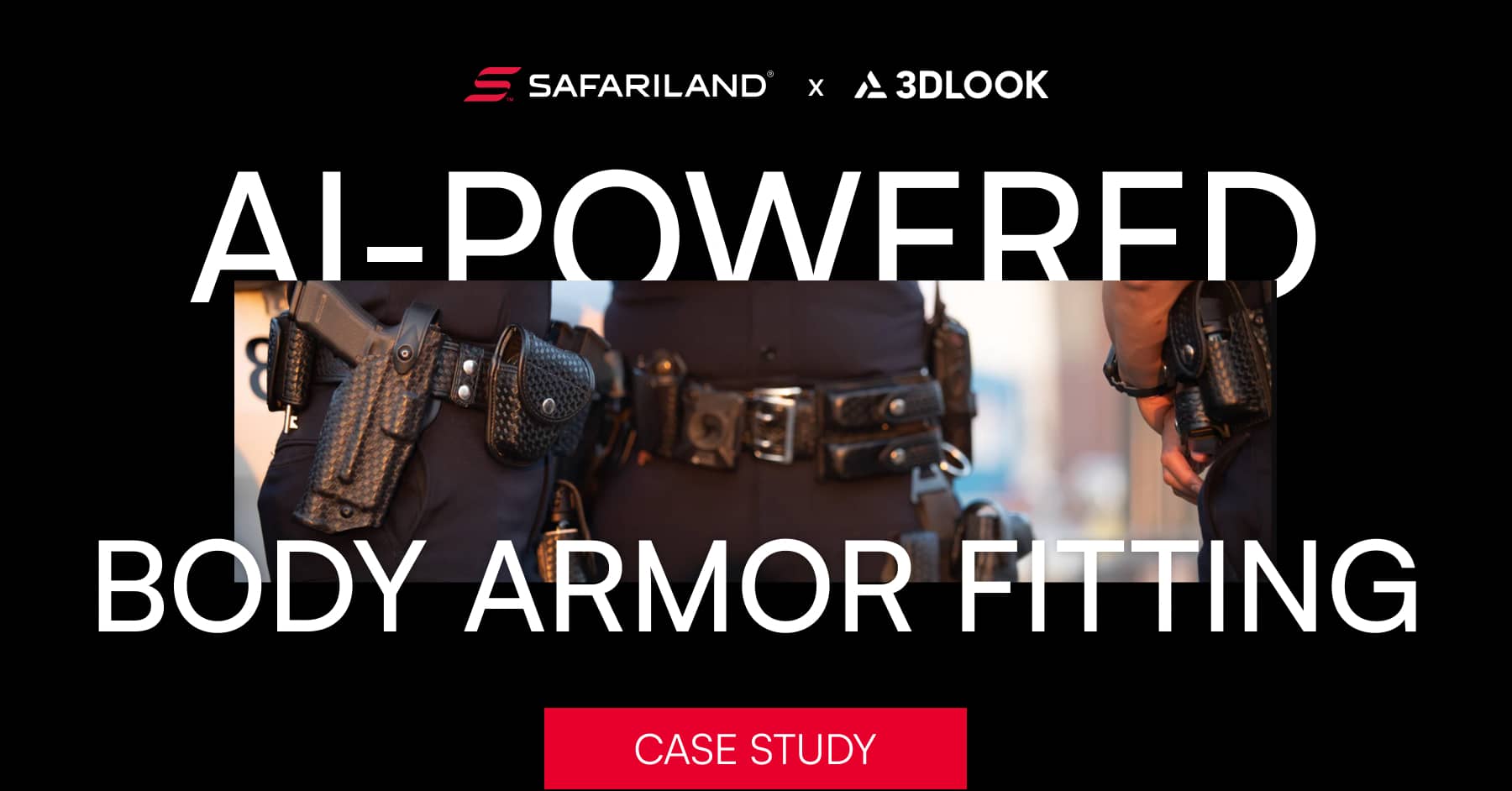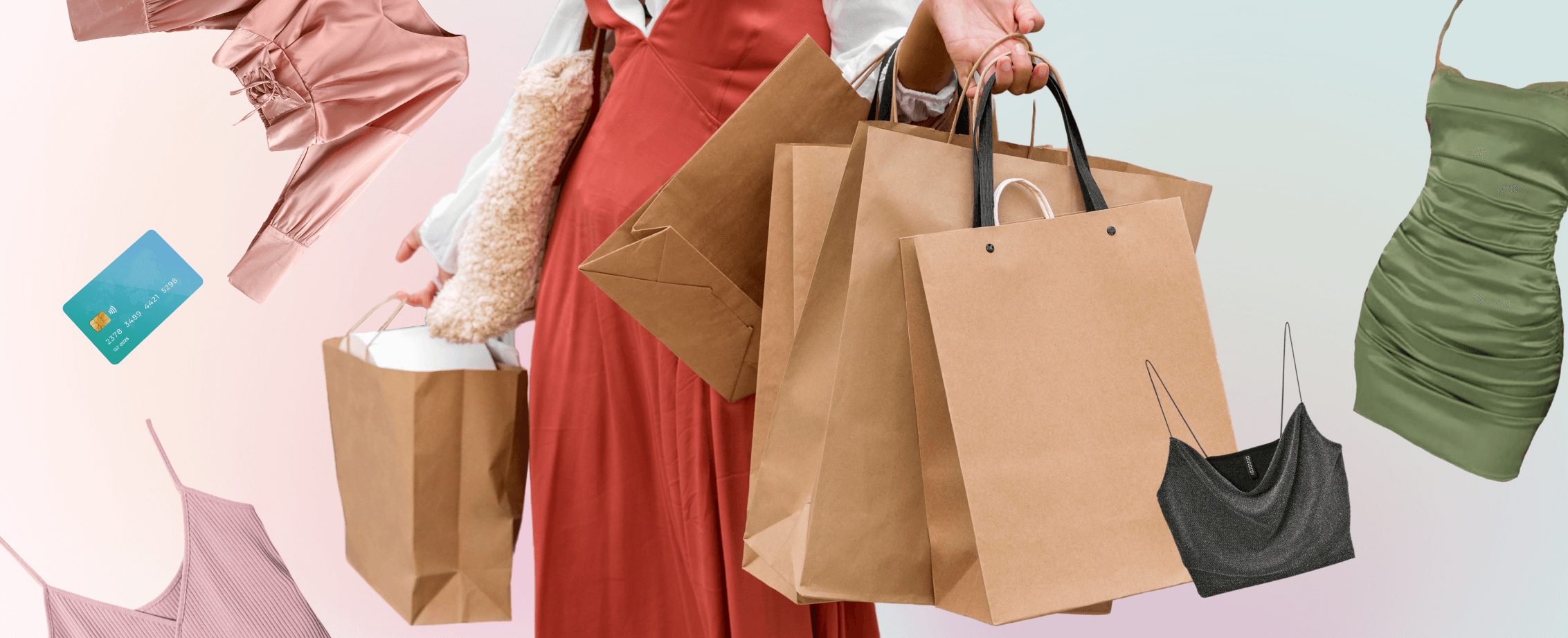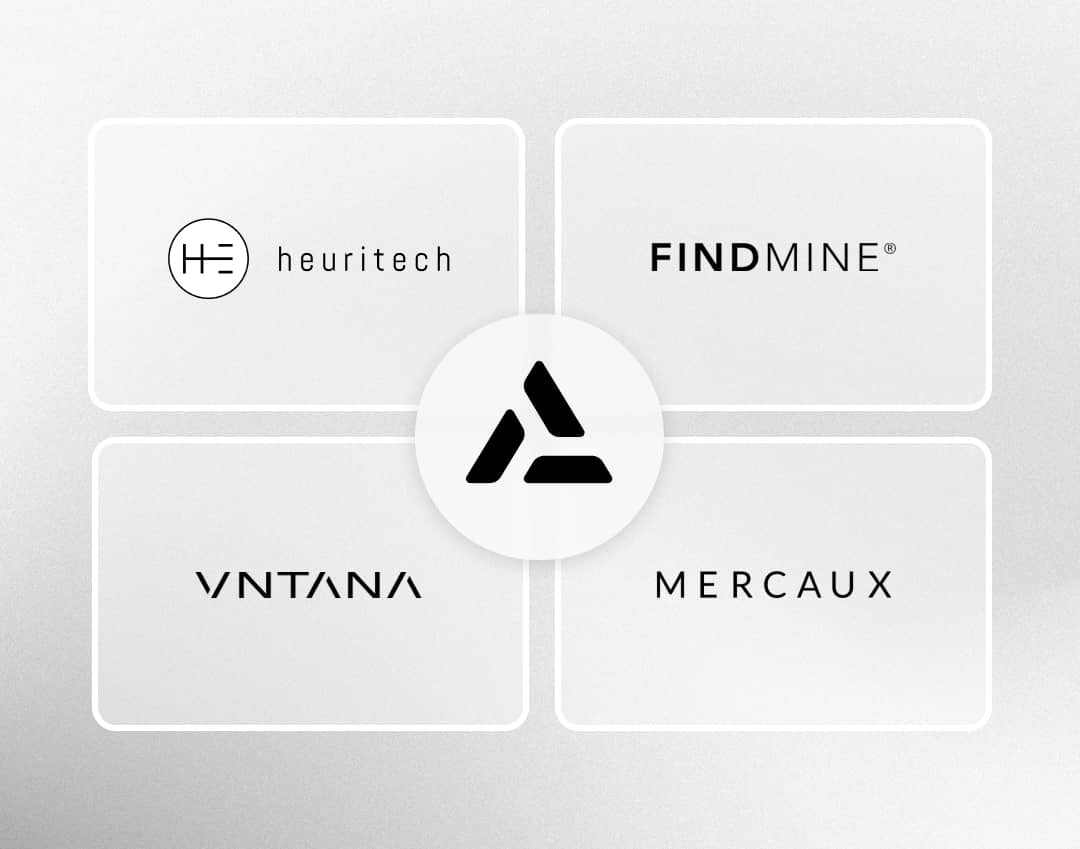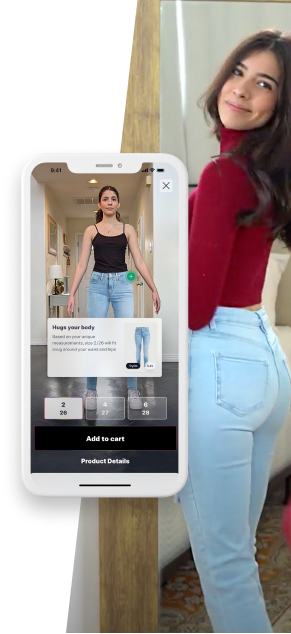Tech in Fashion: 11 Fashion Technologies for Innovative Brands
Fashion has always been at the forefront of innovation, but the last decade has seen unprecedented transformation in the industry.
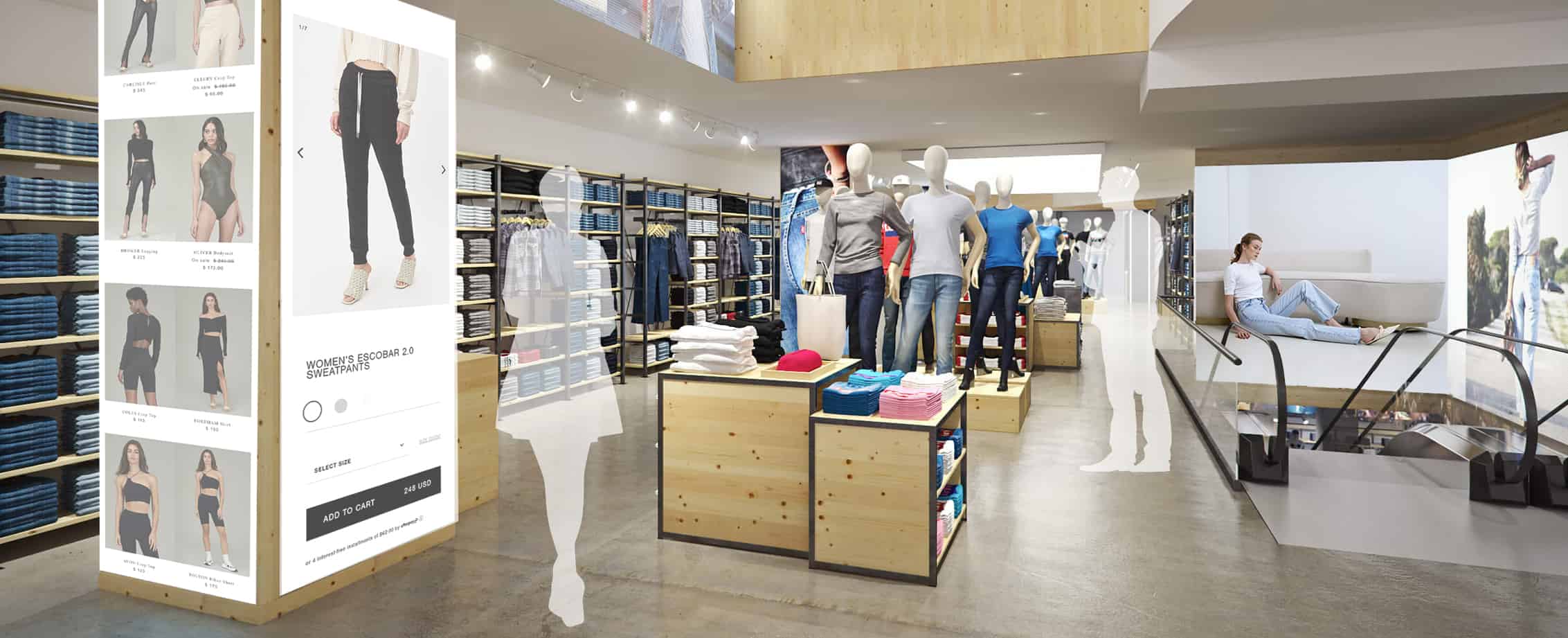

Share on

Robots roam factory floors, increasing efficiency on manufacturing lines, sensor technology is helping brands to track stock as it is transported around the globe, and AI is serving as a personal shopping assistant to every customer both online and in-store. These innovations are fast becoming a must-have for fashion businesses. Discover the latest technologies shaping the fashion industry and why they are vital to future-proof your fashion business.

Robots roam factory floors, increasing efficiency on manufacturing lines, sensor technology is helping brands to track stock as it is transported around the globe, and AI is serving as a personal shopping assistant to every customer both online and in-store. These innovations are fast becoming a must-have for fashion businesses. Discover the latest technologies shaping the fashion industry and why they are vital to future-proof your fashion business.
Fashion has always been at the forefront of innovation, from pioneering sewing machines to ultra-efficient supply chains and the early ventures into e-commerce.
But tech in fashion has never been more abundant than it is now. Artificial intelligence is optimizing vast production lines, augmented reality is enhancing the customer experience, and the virtual world is creating lucrative new revenue streams.
In this article, we explore 11 fashion technologies driving the industry and shaping tomorrow’s fashion trends:
- Artificial intelligence
- Synthetic media
- Virtual influencers
- Live streaming
- Virtual fashion
- 3D printing
- Augmented reality
- Metaverse
- Blockchain
- Internet of Things
- Innovative eco-materials
What is fashion technology?
Fashion technology encompasses the range of innovative solutions that support the fashion industry in designing, manufacturing and selling garments.
The fashion tech industry has designed these innovative solutions specifically to aid the industry and its customers, improving efficiency and effectiveness across development, planning, production, distribution, retail, returns and disposal.
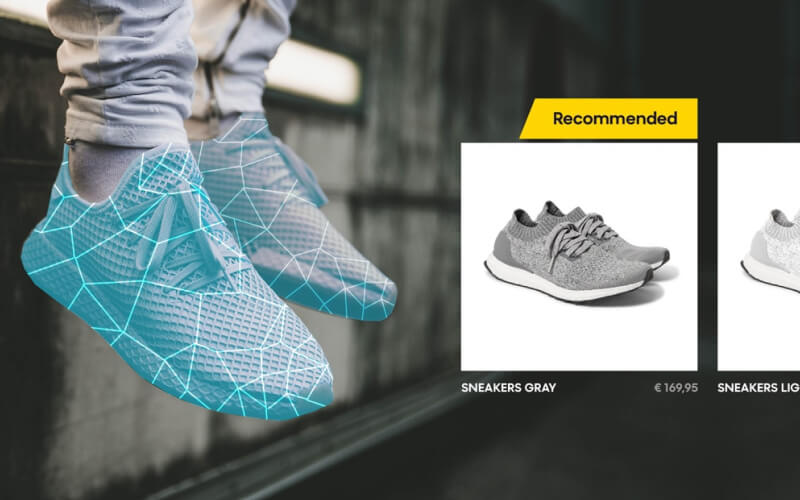
Image source: Exponea
Fashion tech innovation: The key to success in the future of fashion
Many leading fashion retailers have fallen out of business due to a lack of innovation, and more will surely follow. To survive, businesses will need to focus on digital, sustainability and consumer engagement — currently the industry’s three biggest opportunities. Here, the use of technology in fashion can help.
AI eases the challenge of shopping for fashion online, while AR brings unique experiences to the physical store, providing novel and engaging ways to shop. Likewise, fashion technology is helping to reduce the industry’s environmental footprint by supporting the development of eco-friendly materials, optimizing production to minimize waste, and reducing wasteful emissions from returns.
For many consumers, these improvements are essential — half of all consumers consider brand values when purchasing, while personalization is also a driving force for consumers.
The need for tech in fashion: Do consumers really care about fashion technology?
In the future of fashion, technology will be crucial to business performance. In fact, the growing demand for tech in fashion retail is already having a profound impact on brand revenue and customer satisfaction. For instance, according to Accenture, 75% of customers admit they are more likely to buy from companies that recommend products based on their past purchases.
Did you know 1822 Denim uses 3DLOOK’s YourFit to deliver on its brand pillars: inclusivity, sustainability and technology? The solution scans each customer and compares their unique measurements against product data to find their perfect size. 1822 Denim’s customers love the results — Since implementing YourFit, active order value has risen by 23%!
Technology in fashion retail: How can investing in fashion retail technology improve brand performance?
Some 2.2% of visitors to an online fashion store go on to make a purchase, spending $97 on a total of 2.6 items. Retailers can expect to sell 24.3% of their inventory within two months and 68.7% within a year, with approximately 30% of these purchases eventually returned by the customer. This is the average. However, the emergence of transformative technology in fashion retail is enabling retailers to drastically improve their key metrics.
With 37% of Gen Z consumers regularly shopping online as a form of entertainment, fashion retail technology focused on providing an experience, in particular, can produce brand-boosting results. For instance, by using YourFit to bring the fitting room to the virtual world, brands have been able to keep customers browsing for up to four times longer. As a result, there’s a higher chance customers will find items they love, buy and keep — producing up to 16% greater conversion rates and as much as a 6% decrease in returns.
However, not all technology in fashion retail is guaranteed to deliver positive results for every brand. According to McKinsey, experiments with in-store technologies such as magic mirrors and interactive holograms have largely failed to deliver conversion rate improvements that make up for their hefty installation costs, for instance. For impactful results, brands must consider their individual operational inefficiencies and invest in fashion retail technology specifically designed to address these pain points.
Why else should you invest in fashion tech? Company-boosting benefits that many brands overlook
Improving and sustaining high conversion rates, average order value and net revenue are crucial to maintaining a healthy business, but these aren’t the only benefits that investment in fashion innovation can provide. The growing number of fashion technology solution companies are focused on a diverse range of issues and areas, delivering benefits that include:
Improved inventory management
The fashion industry now has access to a range of innovations that make it easier to track and manage stock throughout the supply chain, avoiding confusion and losses that cost businesses dearly. Inventory management systems, which automatically update inventory quantities, generate order data and track goods as they move throughout the supply chain, are already widely used by fashion retailers. Now, advancements in technology such as AI are providing additional insight — such as demand forecasting and delivery route optimization — which will ultimately reduce expenses, boost sales, and enhance the customer experience.
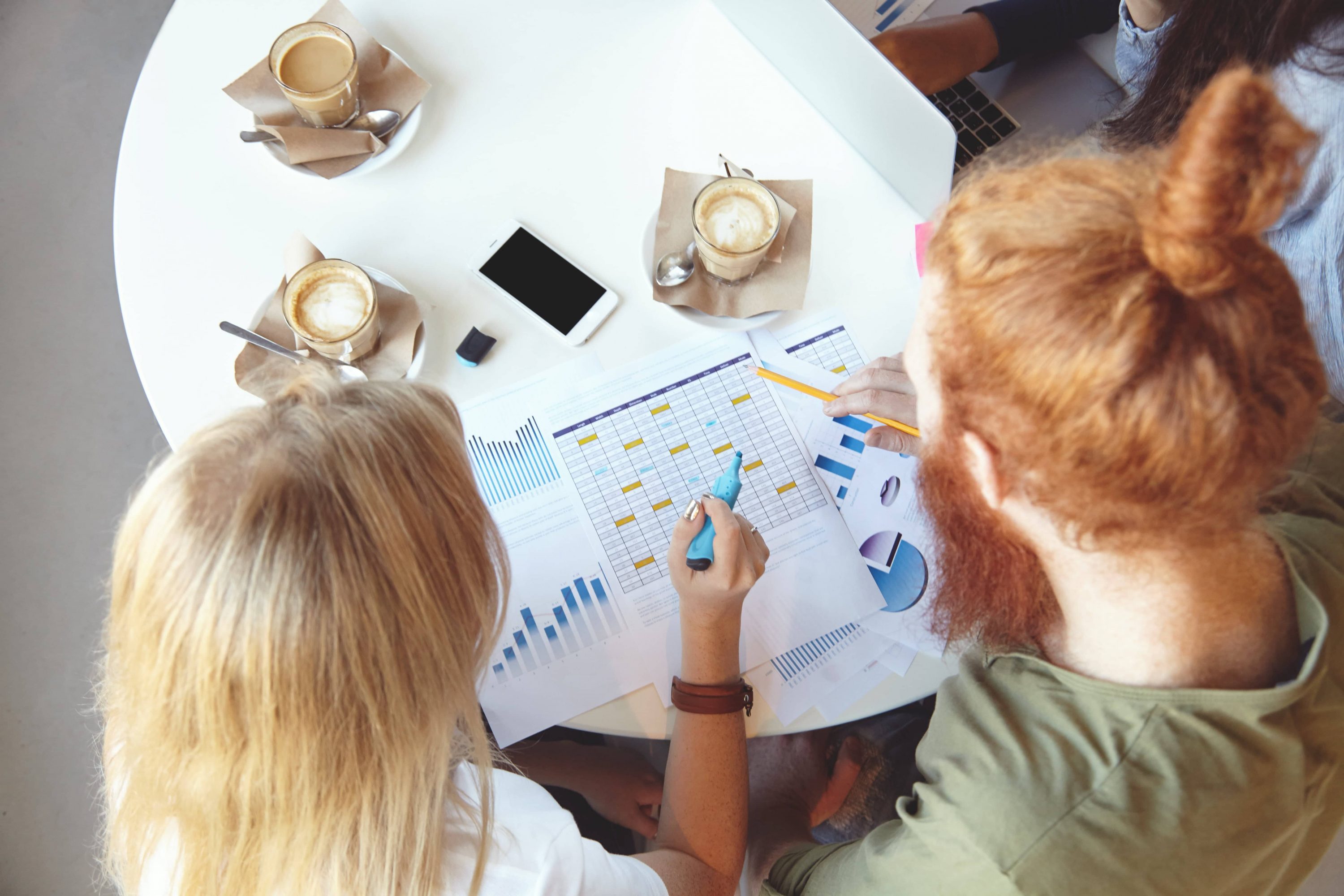
Image source: Freepik
Strengthened sustainability credentials
Some 63% of consumers view a brand’s promotion of sustainability as an important purchasing factor, and fashion innovation is providing effective and easy-to-implement ways for brands to meet the growing demand for sustainable practices without damaging the shopping experience. With hauling returned inventory estimated to create 15 million metric tons of CO2 emissions annually, as reported by Forbes, solutions such as virtual dressing rooms can help customers to find their right size without relying on bracketing their purchases, for instance. With sizing responsible for 38% of all online clothing returns, such innovations can provide an immediate and drastic improvement to a brand’s sustainability.
Greater data generation
Fashion innovation solutions typically rely on vast amounts of customer information to produce brand-boosting results and, as such, they’re designed to convince increasingly privacy-conscious consumers to provide permission to capture their data. This data not only powers these innovations, but it can provide brands with insight into how different consumer groups behave during each stage of the retail experience. With this, brands can finetune the customer journey, optimize pricing, improve the effectiveness of their marketing campaigns and deliver personalized experiences that increase conversions.
Future fashion trends: How will future fashion technology transform the apparel industry?
In 2021, fashion companies invested approximately 1.7% of their revenue in technology. By 2030, that figure is set to double to between 3% and 3.5%, according to McKinsey, as the fashion tech industry continues to grow at a faster pace than ever before. As businesses spend on optimizing their production, distribution, retail, returns and recycling processes using the latest fashion technologies, the customer journey is likely to undergo a drastic transformation.
Rather than heading to a physical store to try items off the rack, in the future, fashion technology will enable customers to spot digital clothing on their favorite virtual influencer, scan their body and try it on in the virtual world. In a matter of hours, 3D printers will produce the item in the perfect size, keeping track of the manufacturing process via the blockchain. Once ready, robot factory assistants will pack it up and load it onto a drone, ready to deliver to the customer’s precise location.
Apparel industry technology trends and 11 fashion technologies for brands to explore
1. Artificial intelligence
When it comes to fashion technology, AI has been top of the agenda for many brands. AI — the simulation of human-like problem-solving and decision-making within a machine — is redesigning fashion, with tools such as chatbots and personalized recommendations now commonplace.
However, there is further innovation to come — Amazon will soon open an AI fashion store, where machine learning algorithms will provide tailored recommendations as customers browse in the physical world.
Likewise, thanks to advancements in fashion technology, AI stylists are beginning to find their feet in fashion retail. These algorithms trawl through vast amounts of data – size, fit, style preferences, location, age, gender and more – to make styling suggestions that will best appeal to that particular customer.
Stitch Fix, for instance, recently launched its personalized styling platform, which recommends items based on the user’s preferred style, budget and size. With each ‘like’ or ‘dislike’, the AI learns what each customer loves to tailor its future recommendations.
Did you know AI is also helping to overcome wasteful manufacturing models? Slow fashion marketplace Mive uses 3DLOOK’s body scanning technology to collect customer body data remotely, enabling a made-to-order model that eliminates waste and minimizes emissions.
2. Synthetic media
As AI advances, there will be plenty of new fashion innovations to explore. One such future fashion technology brands are exploring is synthetic media — content created using algorithms, which learn from audio, video, photos and text to generate realistic media.
Brands will be able to create content at scale in a fraction of the time. LG Group’s AI fashion design, which generated 3,000 unique patterns for its New York Fashion Week collection, offers a prime example.
In time, famous faces could be used to model hundreds of products in computer-generated media, mimicking the model’s look, sounds and mannerisms.
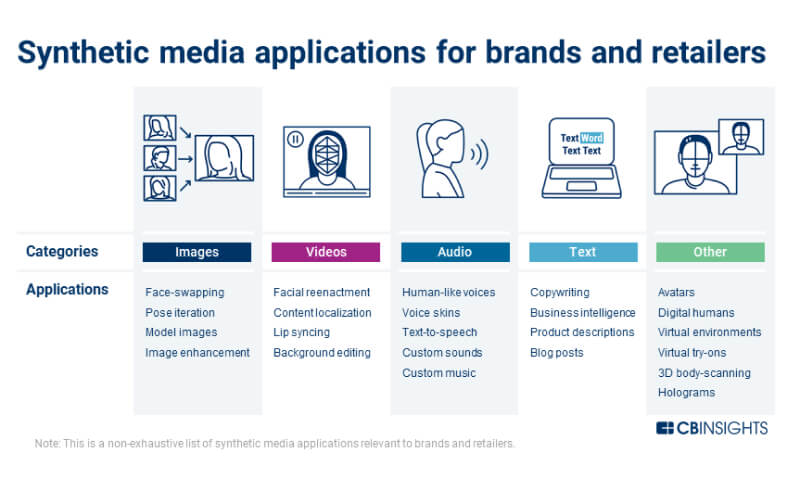
Image source: CBInsights
3. Virtual influencers
Brands are already utilizing synthetic media in the form of virtual influencers, computer-generated characters that mimic human influencers on social media.
Stars such as Lil Miquela have attracted huge follower counts and, with it, a host of leading brands eager to style them in digital fashion items to advertise their products.
However, brands aren’t just partnering with established names. They’re also creating their own. Following the likes of Yoox and Prada, PrettyLittleThing is the latest to launch its own virtual influencer, ‘Virtual Girl,’ a virtual model that will advertise products across its sales channels.
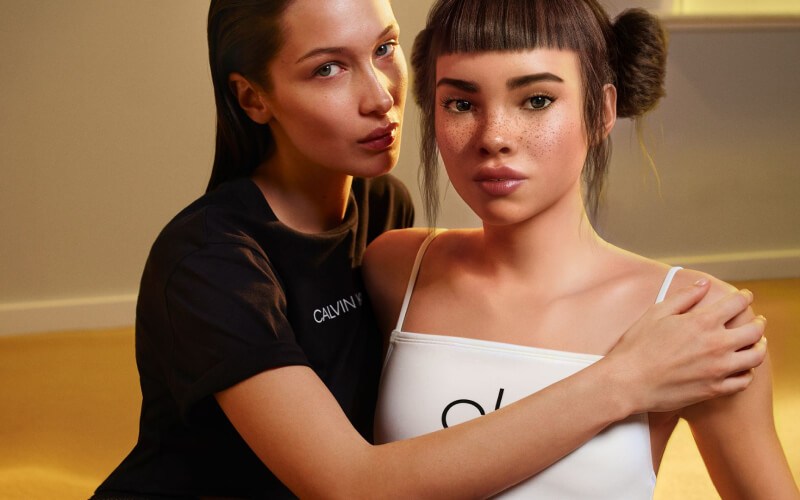
Image source: The Source
4. Live streaming
Social media is providing a number of exciting ways for brands to connect with potential customers, with social commerce sales expected to surge to $600bn by 2027.
This will be fuelled by growing ‘live commerce’ sales, where brands sell directly to customers through events broadcast in real-time over social media. Popular in China, the trend is expected to spread to Western markets in 2022, creating a $500bn market according to Forbes. Threads Styling — a chat-based commerce pioneer — believes livestreaming could generate 50% of its sales within a few years.
Social media can also be a valuable tool to predict the next big thing. Rising giant Shein has captured huge crowds on social platforms by using analytics software to trawl through the posts of influencers and designers to discover the latest trends.
5. Virtual fashion
Digital-native shoppers are buying into virtual fashion, or otherwise known as digital fashion — intangible garments that they can collect and ‘wear’ in the online world. Ralph Lauren, for instance, recently launched a virtual store on Roblox. Here, players can purchase digital fashion inspired by its real-world designs to dress their characters.
Meanwhile, brands such as Dolce & Gabbana and Louis Vuitton are capitalizing on the digital fashion fashion NFT (blockchain-based, tradable, digital assets) trend, with the luxury fashion NFT market set to grow to $25bn by 2030, according to Morgan Stanley.
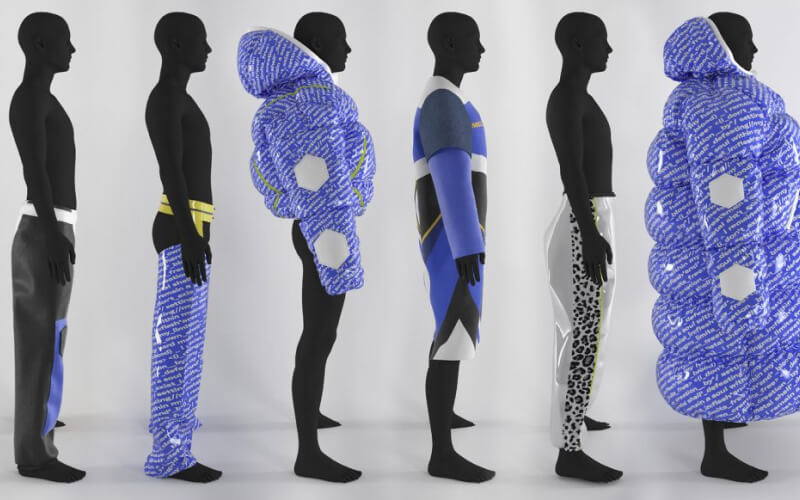
Image source: Heuritech
6. 3D printing
3D printing can help retailers to increase personalization and become the sustainable fashion brands that modern consumers desire. This technology allows intricate digital designs to be precisely printed by a machine, minimizing manufacturing error and resource waste.
Currently, 3D printing in fashion is mostly limited to show pieces — designer Asher Levine has created one-off pieces for music stars such as Grimes, Lady Gaga and Lil Nas X, for example. However, innovative brands hope to bring 3D-printed garments to the masses. For instance, last year saw the launch of 3D-TEX, a start-up that intends to produce 80,000 seam-free garments annually using 3D knitting technology.
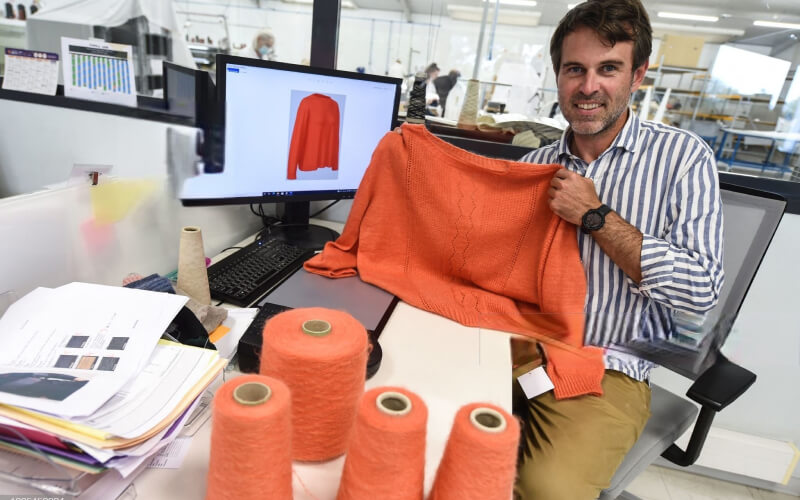
Image source: Getty Images
7. Augmented reality
Augmented reality technology overlays digital objects over the real world, which users can interact with in real-time.
With 71% of consumers willing to shop more with brands that incorporate AR, this is a huge area of interest for fashion brands, which use the technology to create exciting, engaging experiences.
During New York Fashion week, Maisie Wilen used holograms to display its latest designs, accessible to those at home in full 360-degrees through a smartphone.
However, the most anticipated use of AR in fashion is virtual try-on. Leading retailers such as GAP are exploring this, having recently launched an app that allows customers to visualize digital garments on their bodies.
Did you know 3DLOOK’s YourFit offers virtual try-on too? From just two quick photos, retailers can unlock a virtual fitting room where customers can visualize how a product will look on their body. Powered by body data collected through 3DLOOK’s mobile body scanning technology, YourFit’s try-on feature provides customers with results they can trust and the confidence to shop.
8. Metaverse
With the tightening of data privacy making traditional customer targeting less effective and more costly for fashion retailers, many are exploring emerging channels, such as the metaverse, to engage customers and boost ROI.
The metaverse refers to the range of virtual experiences and environments that have sprung up across the online world in recent years, such as Decentraland and Meta’s Horizon Worlds. These digital environments provide a place for users to play, chat and, increasingly, shop. It remains to be seen whether the metaverse is a passing fad, but for the time being, major fashion retailers are investing heavily in advertising throughout these digital worlds to target younger consumer groups.
Fast fashion brands such as H&M have turned to Gen Z-populated digital worlds such as Roblox, where it launched its ‘Looptopia Experience’, which allows players to create virtual garments to dress their avatars up in. With 70% of the game’s Gen Z users stating their real-world style is inspired by how they can dress their avatars, this represents a big opportunity for those that embrace fashion innovation and explore the virtual world. And it isn’t just fast fashion that has spotted the opportunity — luxury fashion brands such as Gucci, Burberry and Ralph Lauren have also set up shop in Roblox and other virtual spaces just like it.
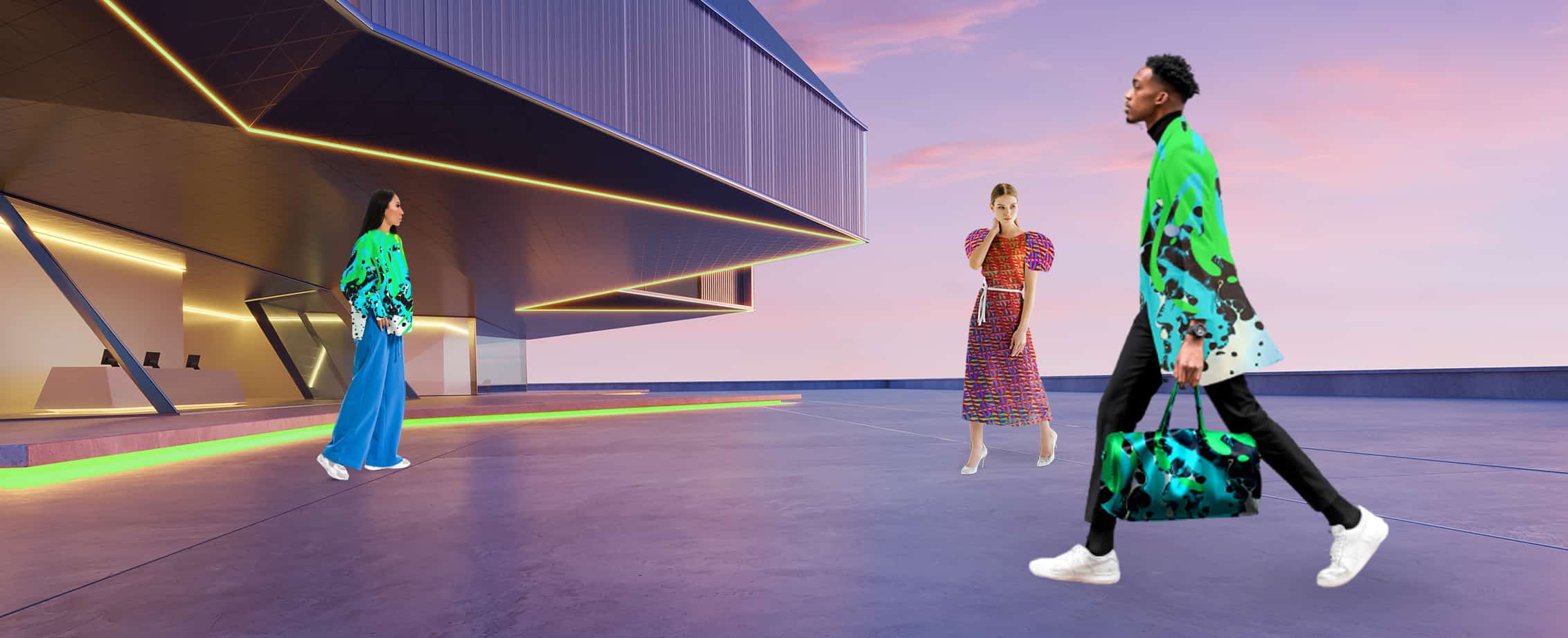
9. Blockchain
NFTs aren’t the only use fashion companies have found for the blockchain, a decentralized, digitally distributed ledger of records.
With $300bn worth of counterfeit fashion sold annually, according to McKinsey, brands use blockchain technology to fight back. Chanel is one of many launching a digital passport which, through a unique, embedded metal plate, will confirm a product’s authenticity.
Others are utilizing blockchain to improve transparency as consumers demand sustainable and ethical goods. Retailers such as Net-a-Porter are creating ‘digital twins’ for their products, which contain information on its impact and can be updated in real-time.
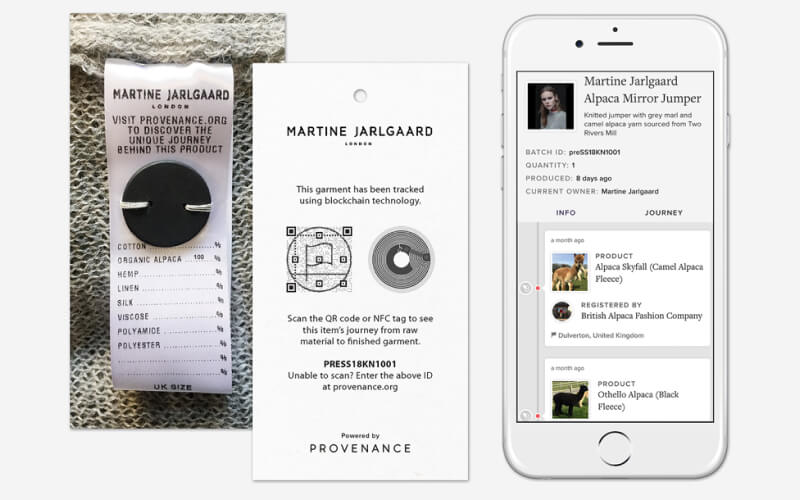
Image source: Fashion Technology Accelerator
10. Internet of Things
The Internet of Things describes products that are embedded with sensors and software that enable them to connect to and exchange data over the internet. Popular examples include ‘smart’ lightbulbs, watches and doorbells, but fashion is also branching into the IoT space.
Utilizing this tech, fashion brands can manage stock and reduce product loss during shipping, for instance, by embedding trackers in containers. Others such as Amazon and H&M are experimenting with IoT in the retail setting, using ‘magic mirrors’ that enable customers to browse and try on products through interactive touchscreen displays.
Soon, consumers could be wearing internet-connected clothing too, with innovative companies such as Prevayl SmartWear developing apparel with built-in sensors that monitor heart rate and athletic performance.
11. Innovative eco-materials
With a garbage truck full of clothing sent to landfill every second, the industry is investing in closed-loop recycling systems that can reduce waste and make sustainable fashion the norm. Novetex Textiles, for instance, has developed a system for mechanical cotton recycling which does not consume water or produce chemical waste, and can process up to three tonnes of fabric daily.
Technological advancements are providing a number of ways to improve the sustainability of fashion, from eco-friendly dyeing techniques to lab-made sustainable material alternatives for fashion production. Gucci, for example, is exploring ‘livestock-free,’ nature-friendly materials, while the likes of Hermès and Lululemon are turning to mycelium, a material made from fungus, as an alternative to leather.
With packaging accounting for 26% of the plastic fashion produces annually, according to the Ellen McArthur Foundation, brands must find an alternative here too. Here, innovative startups such as Oceanium are using biorefinery technology to create bio-packaging from sustainable materials, such as seaweed.
Grundéns has begun replacing plastic poly bags with compostable packaging, made from a corn-derived ingredient. This follows sustainability-focused businesses such as LANIUS and Maggie Marilyn, who provide packaging that consumers can compost at home, producing rich nutrients to give back to the earth.
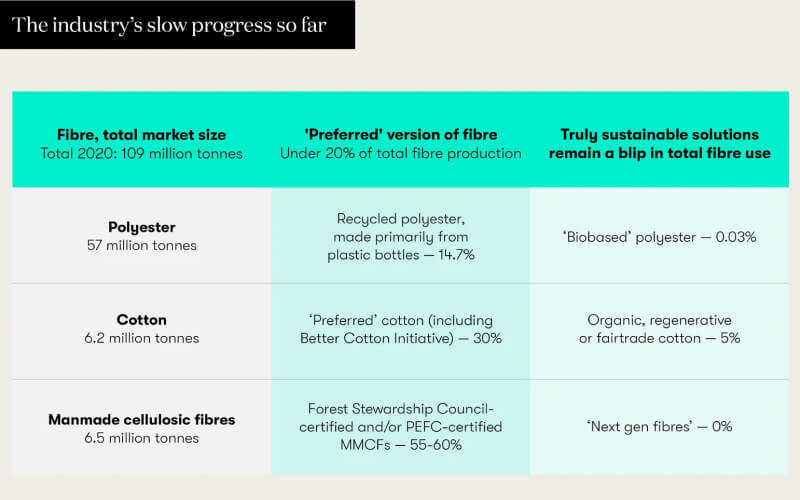
Image source: Vogue Business Textile Exchange Preferred Fiber & Materials Market Report 2021
Investment-worthy fashion innovations: The fashion technology solutions companies and investors are most interested in
Even in the face of a global economic slowdown and unprecedented market challenges, trend-setting fashion retailers continue to invest heavily in emerging technologies to place themselves in a strong position to accelerate their business growth once conditions improve. In 2021, brands were spending just 1.7% of industry revenue on fashion tech, but that investment is tipped to grow to 3% by the end of the decade.
Investors are piling into the space as well, with the value of the top 50 investments in fashion tech companies having grown by 66% between 2019 and 2021. In particular, investors are seeking out innovations that make fashion commerce more nimble, sustainable and engaging to meet the demands of the modern consumer.
According to BoF and McKinsey, 55% of capital was invested in the ecommerce space. That comes as little surprise as consumers continue to take their shopping sprees online, aided by emerging innovations such as virtual fitting rooms and AI chatbots. The remaining 45% was largely invested in fashion tech companies delivering payment solutions, social commerce, supply chain innovations, blockchain and mixed reality-related technologies.
The virtual try-on space, in particular, has caught the attention of major brands and investors. In recent years, Gap has acquired fashion tech startup Drapr to develop its own virtual try-on solution, while Walmart has acquired both Zeekit and Memomi in a bid to increase its dominance in the digital space. Similarly, Farfetch has acquired AR fashion tech startup Wanna, while tech giants Amazon and Snap have also been investing heavily in developing their own virtual try-on tools. And it’s easy to understand why this is a fashion technology solution companies are highly interested in. Virtual try-on solutions such as YourFit by 3DLOOK can streamline the shopping experience, engage customers and reduce fashion’s environmental costs — delivering everything brands and investors are looking for in a fashion innovation investment.
Technology trends in fashion: Are these innovations the future of fashion?
Trends come and go. Undoubtedly, some of the latest technology in the fashion industry will be passing fads, but others have the potential to drive long-term positive change.
With the potential to drastically improve personalization and reduce retailers’ operating costs, when it comes to the future of fashion technology, AI is certain to play a crucial part. Likewise, with fashion facing regulatory pressure with the launch of New York’s ‘Fashion Sustainability and Social Accountability Act’ and similar measures, sustainability-focused fashion technologies such as digital passports will also be a mainstay.
In the future of fashion, technology will be expected. With digitization at the top of the consumer wishlist, it’s imperative that brands are constantly exploring the new innovations emerging in the apparel and fashion industry. AI-powered solutions such as 3DLOOK’s YourFit can not only provide today’s consumers with the tech-driven experiences they desire but also help the industry to overcome stubborn challenges such as high returns.
Get in touch to discover how 3DLOOK’s sizing solutions can help to future proof your brand, meet modern consumer demands and support healthy business performance utilizing future fashion technology.
Tags:
Fashion | Technology
EXPLORE MORE CONTENT

Subscribe to our Newsletter
Offer your customers an entirely new, inclusive, and engaging way to interact with your brand
Offer your customers an entirely new, inclusive, and engaging way to interact
with your brand
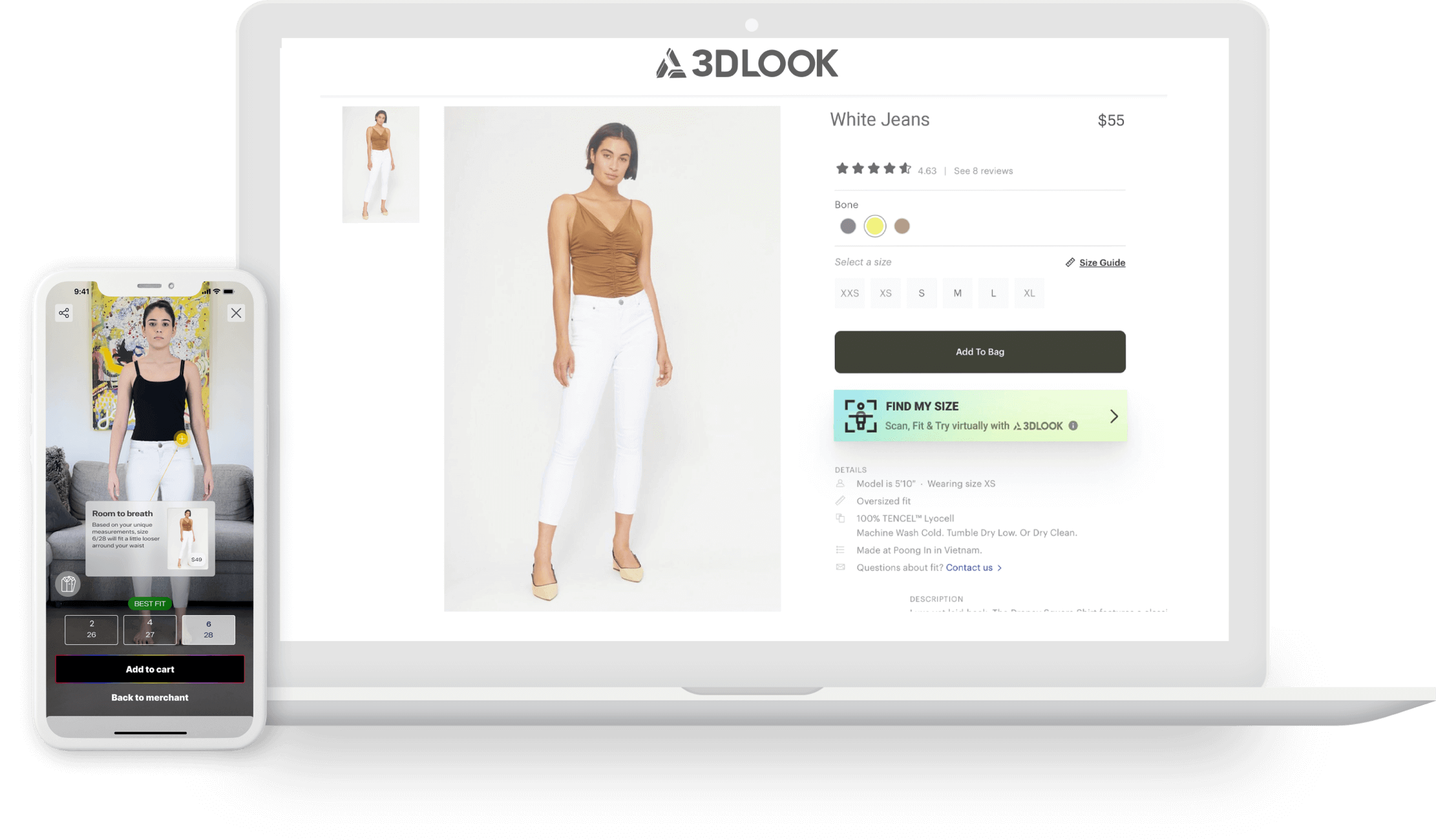
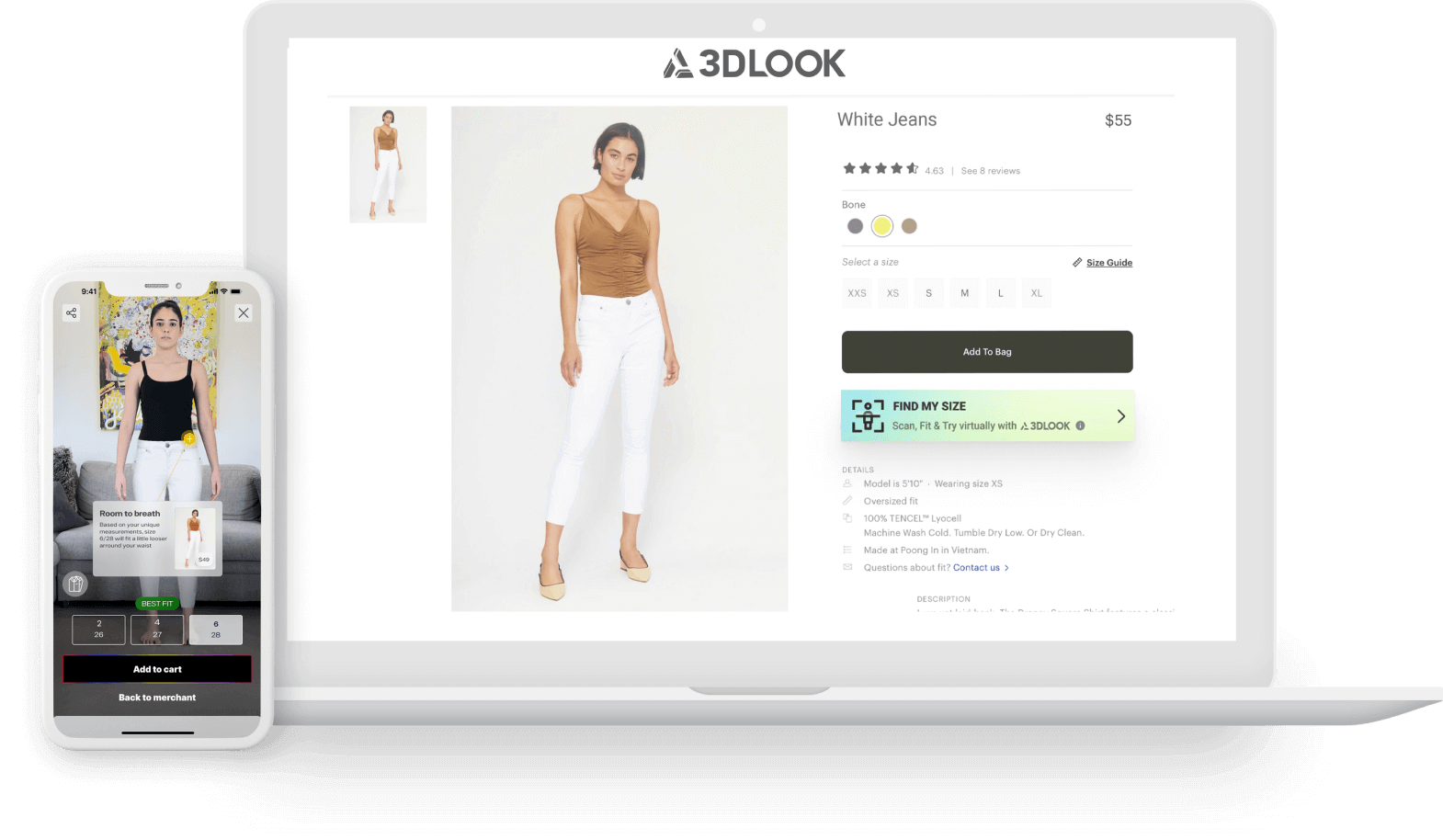
Let us help you find the right solution for your business needs
